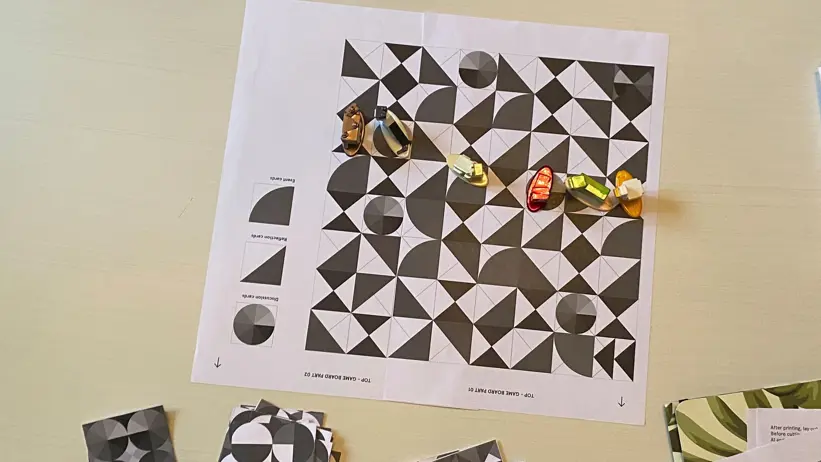
From Speed Dating to Collaboration: A Journey into Multifunctional Landscapes
The theme of one of the two IDA groups in 2022/2023 was multifunctional landscapes. The group enthusiastically explored different creative methods to better understand each other's perspectives and look at multifunctionality from an interdisciplinary perspective.
The fog lies gray over Ultuna on this February day, but inside the stylishly decorated wooden house Ullbo, the atmosphere is warm and cozy. You can almost hear the crackling of a fire in one of the beautiful old tiled stoves. There is no fire lit, but around one of the tables a sparkling enthusiasm is shared by the participants in one of IDA’s two theme groups.
IDA stands for the Interdisciplinary Academy and is an initiative at SLU to increase knowledge about interdisciplinary working methods. IDA consists of two parts – first, the two theme groups, which this year include a total of eleven participants, and second, an open seminar series where various issues concerning interdisciplinary research are raised and discussed.
Speed dating was the starting point
Hanna Fors, a researcher at the Department of Landscape Architecture, Planning and Management, has travelled here from Alnarp. She initiated the theme group that is meeting today to delve into multifunctional landscapes: Multifunctional landscape transformations – turning around the trade-offs.
Groups applying to IDA were asked to formulate and propose their own theme, with a focus on complex issues related to the green transition. The call also required that all researchers in a group belong to different departments, and that none of them had collaborated before. But how did they find each other to prepare a joint application when they had never even met?
“Not only did we not know each other, we hadn’t even spoken before,” laughs Marie Kågström from the Department of Urban and Rural Development. “But we participated in a ‘speed dating’ that SLU Future Food organized. Hanna posted an idea pitch on Teams and we started discussing it there. After a while, we realized we had formed a group and moved into a shared Google Drive document instead. We had a few Teams meetings, and everyone contributed to the same application document.”
“What made the application process work so well was that we are six people who are all curious, open, and willing to talk, ask questions, and explore each other’s perspectives in a curious and respectful way,” says Hanna Fors.
Undisturbed time together
IDA started in November, and the participants can devote 20 percent of their working time until June to collaborate and explore interdisciplinary methods. Once a month they meet at Ullbo in Uppsala, and in the weeks between they hold digital meetings.
“Having undisturbed time together is incredibly valuable,” says Hanna Fors, and the others agree.
Although the theme is central, the goal is not the destination but the journey. Open discussions and time to truly delve into and understand one another are key.
“It gives you respect for the process of understanding other disciplines and for understanding how others think,” says Anna Berlin. “You also learn more by explaining your own basic assumptions to each other.”
“Our thematic work also makes it easier to understand what interdisciplinary collaboration can look like in practice. How can we work across boundaries?” says Uliana Gottlieb from the Department of Economics.
Games and creative methods
The theme this group explores is multifunctional landscapes.
“We take a closer look at different types of landscapes – the urban landscape, the agricultural landscape, and the forest – where everyone wants to extract as much value as possible. How are different values viewed, and what conflicts of interest can arise? How do you achieve multifunctional landscapes in practice? These are some of the questions we are delving into,” explains Anna Berlin from the Department of Forest Mycology and Plant Pathology.
“We have used creative methods to understand each other and examine multifunctionality. We have worked extensively in a workshop-based manner, in the field with methods from nature guidance, and with different visualization techniques,” says Hanna Fors.
Initially, as a way to get started, the group also used a game about interdisciplinary studies, available for free download from Interdisciplinarygames.net.
